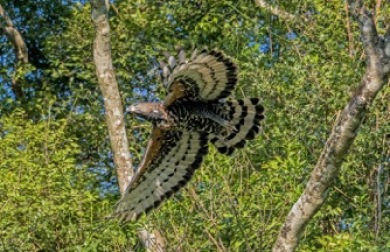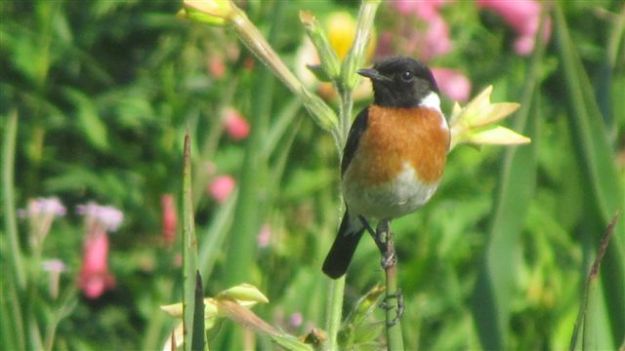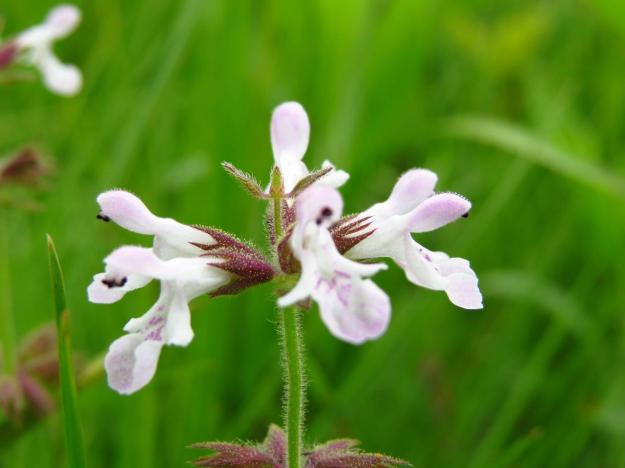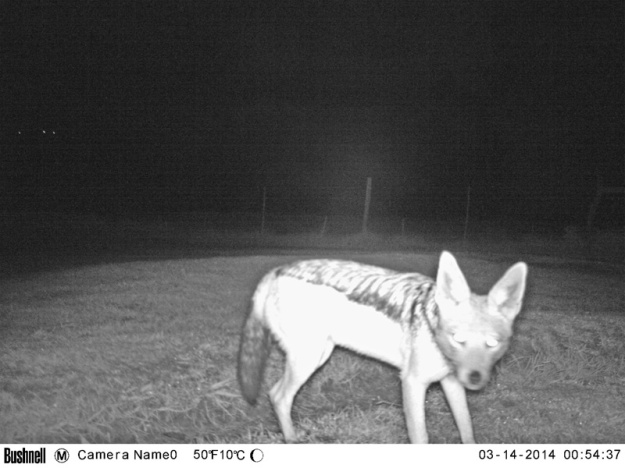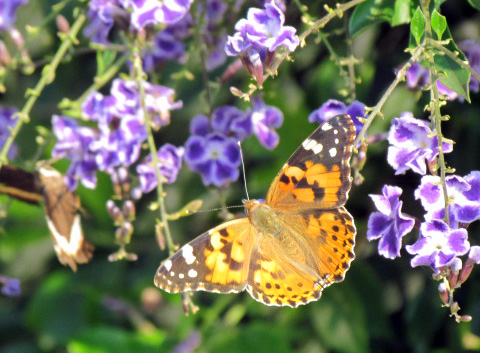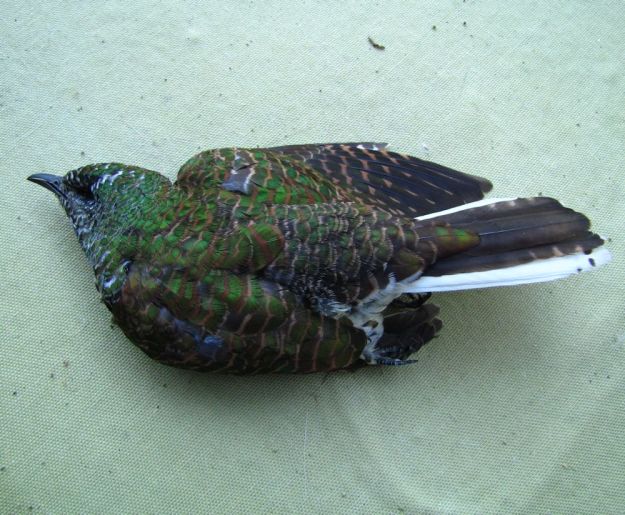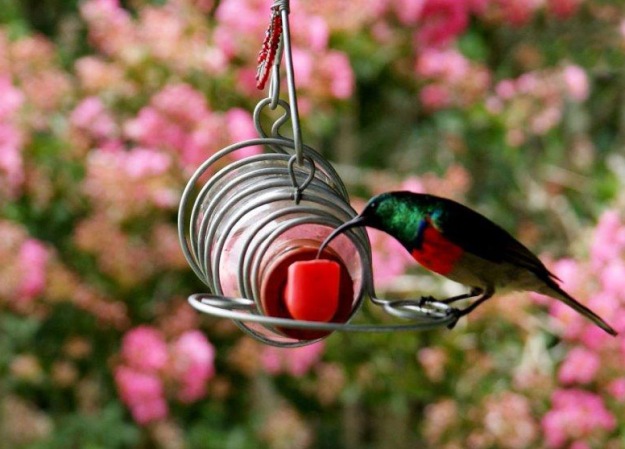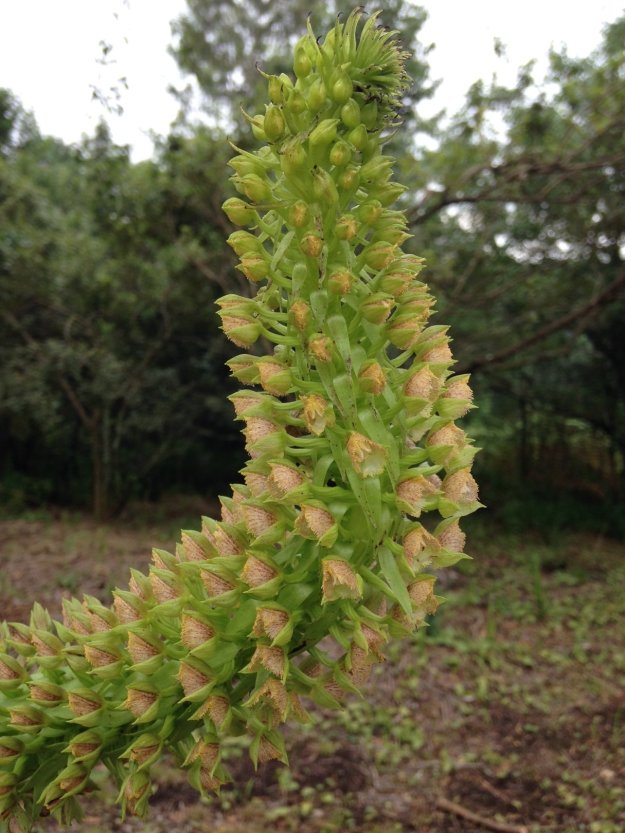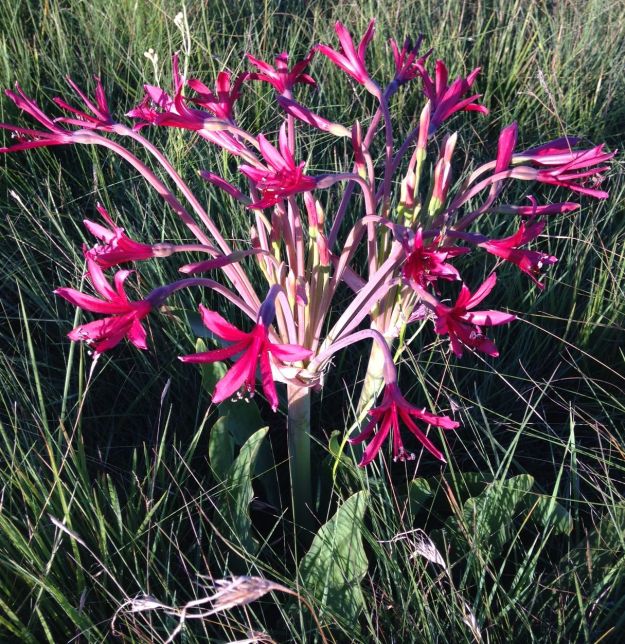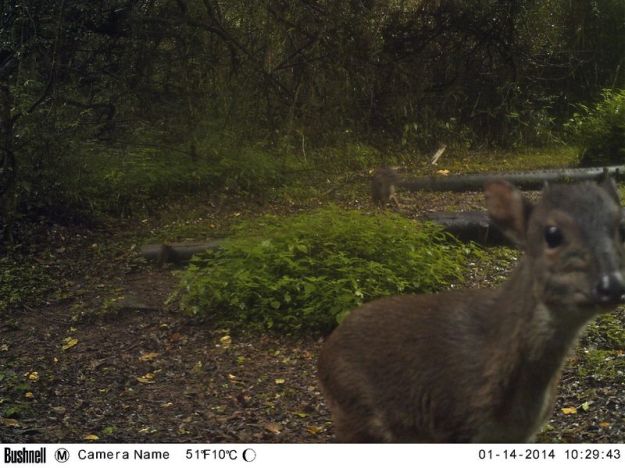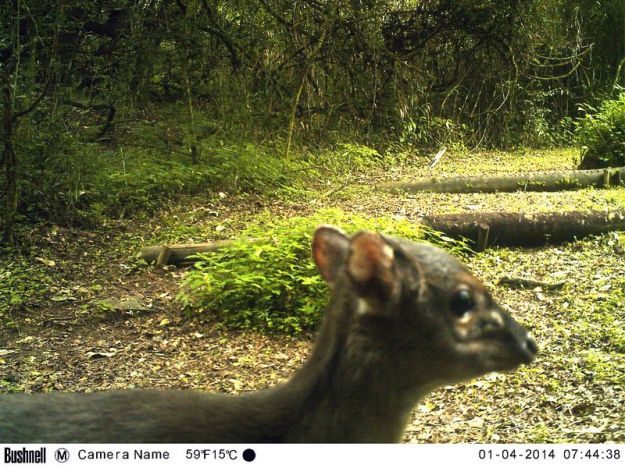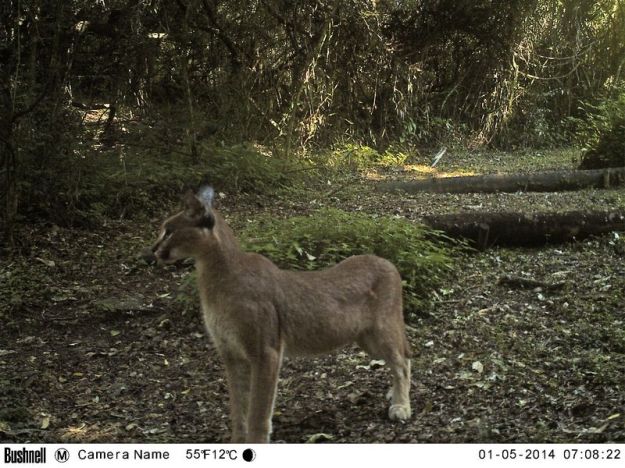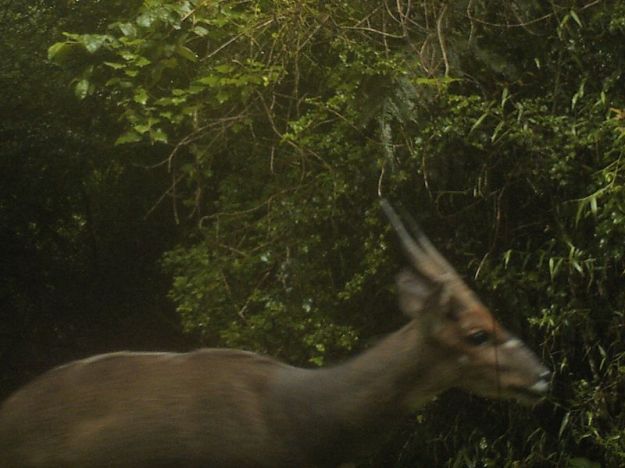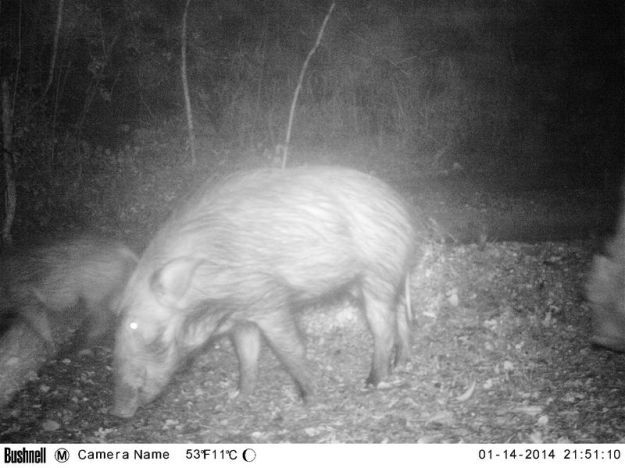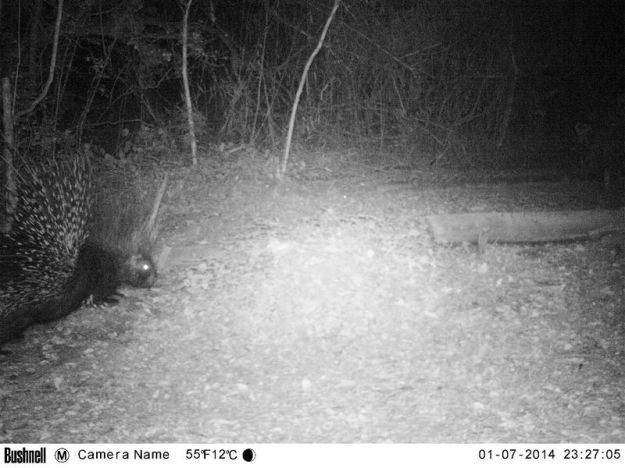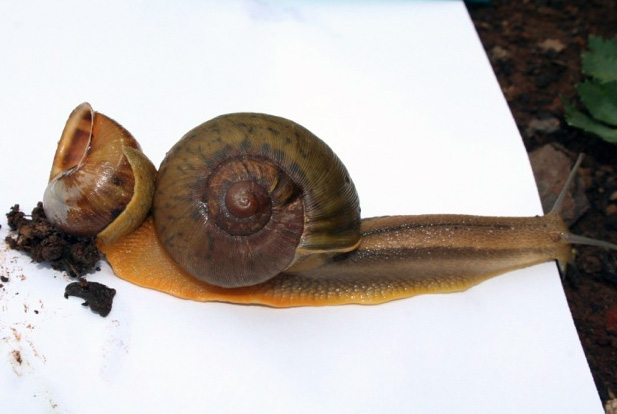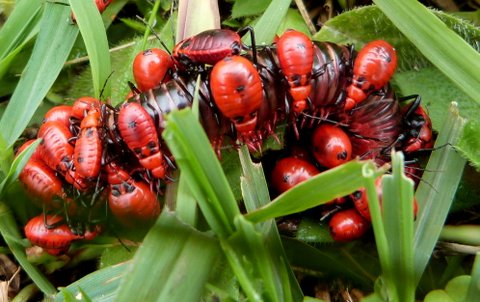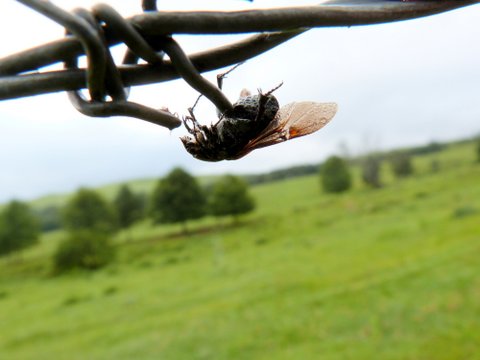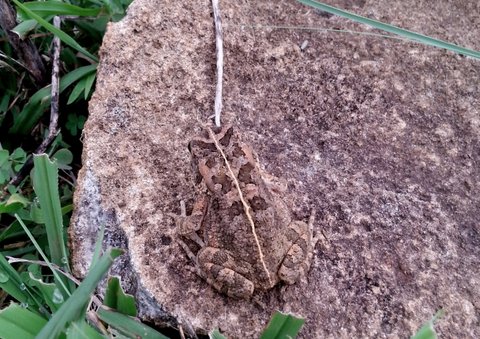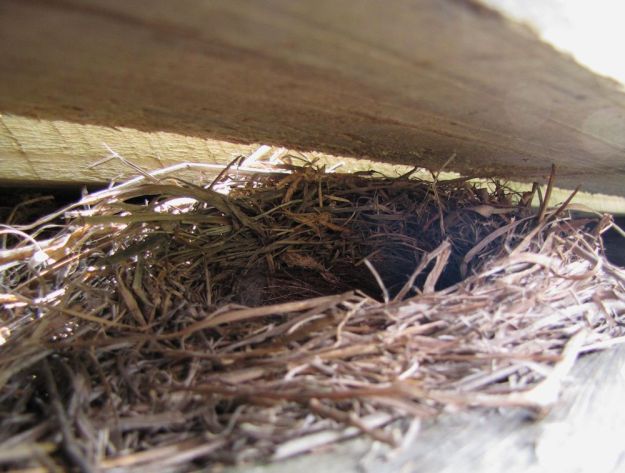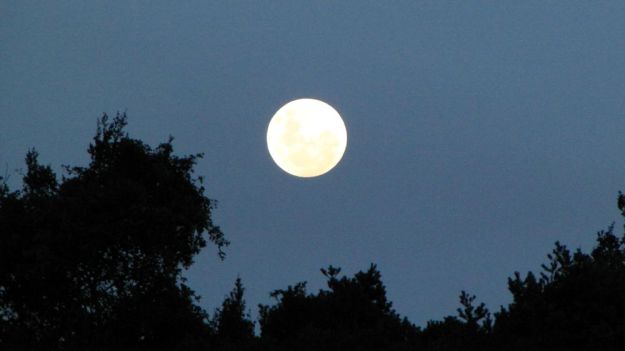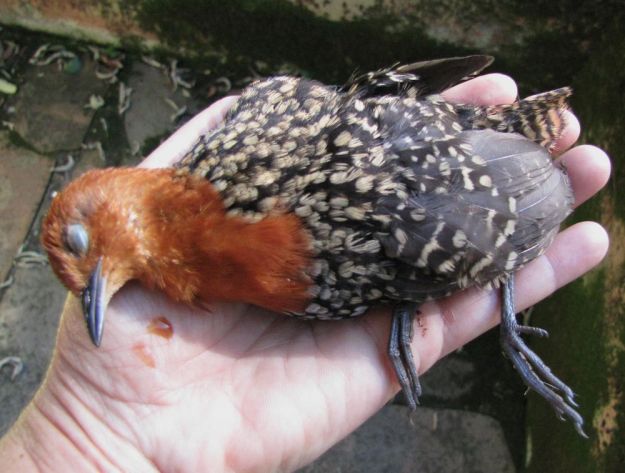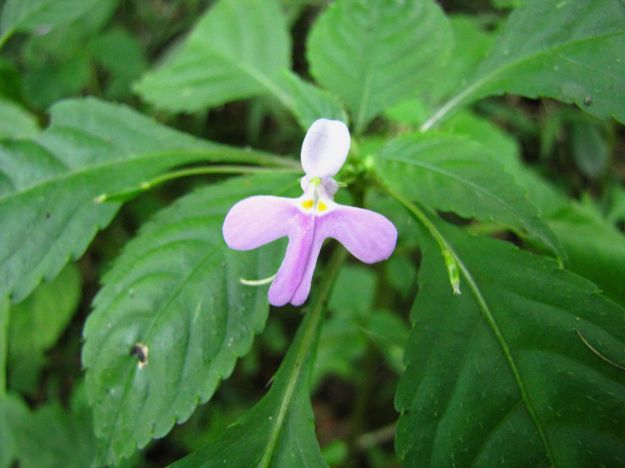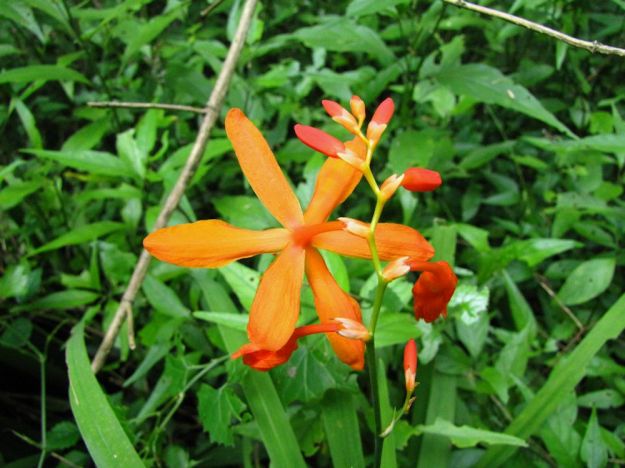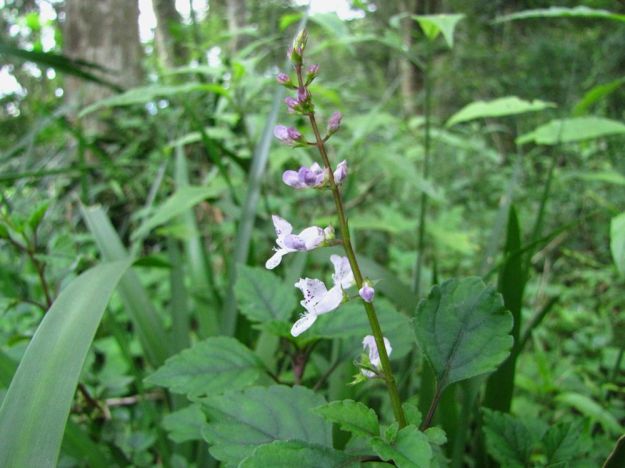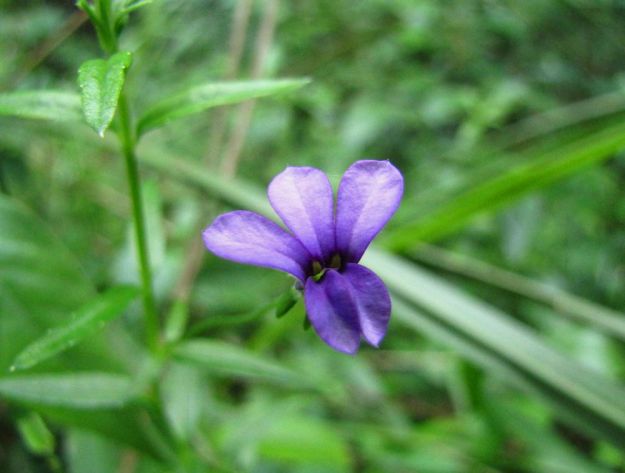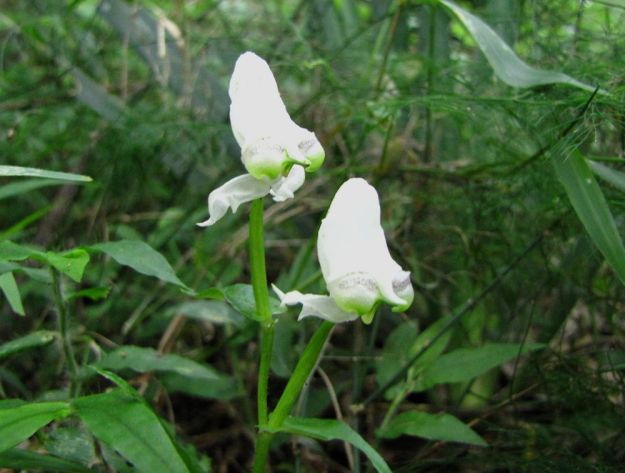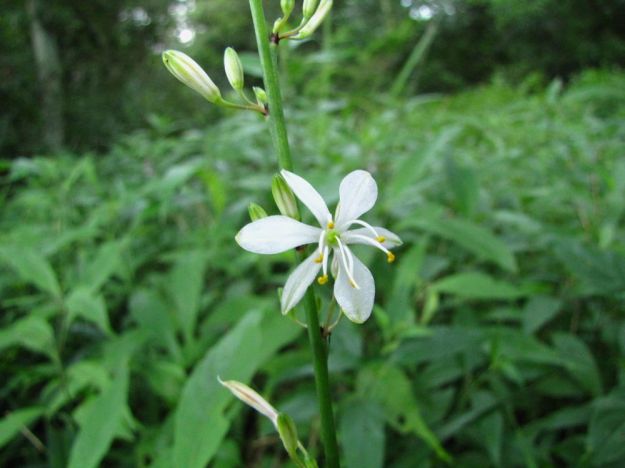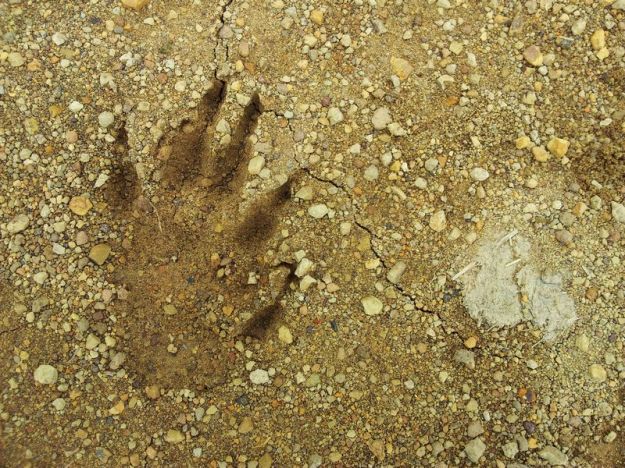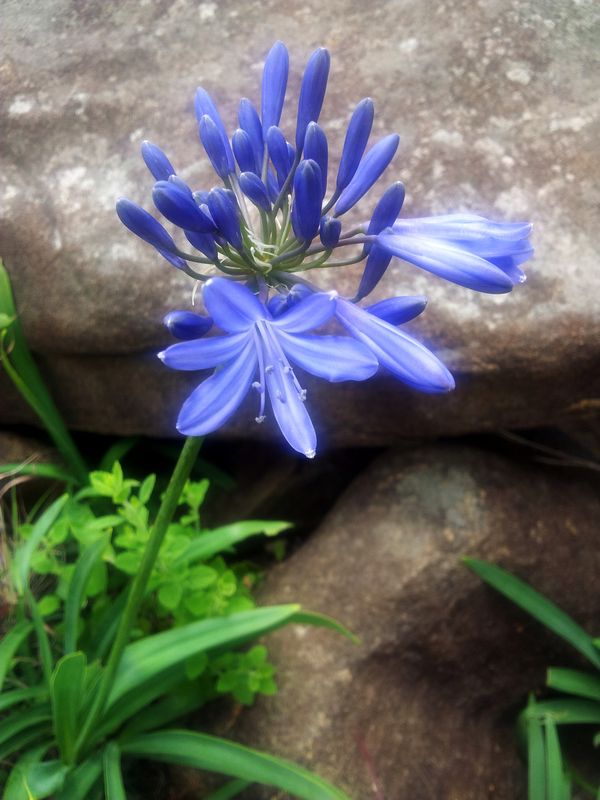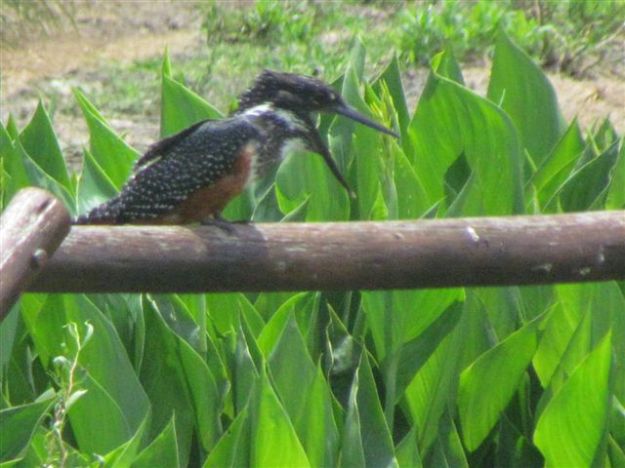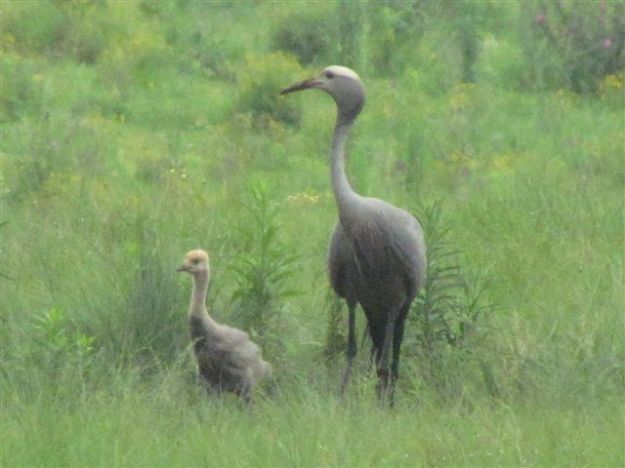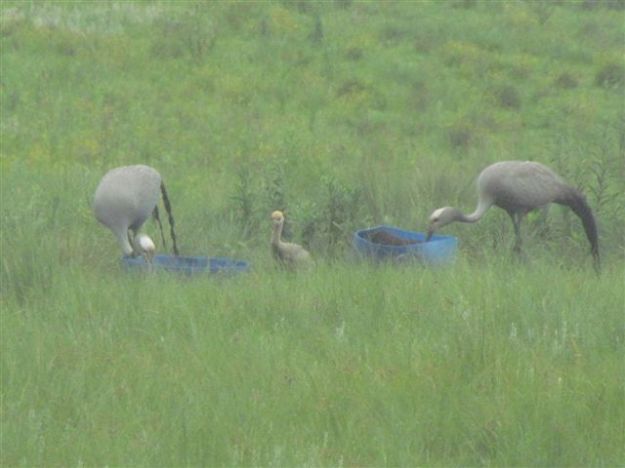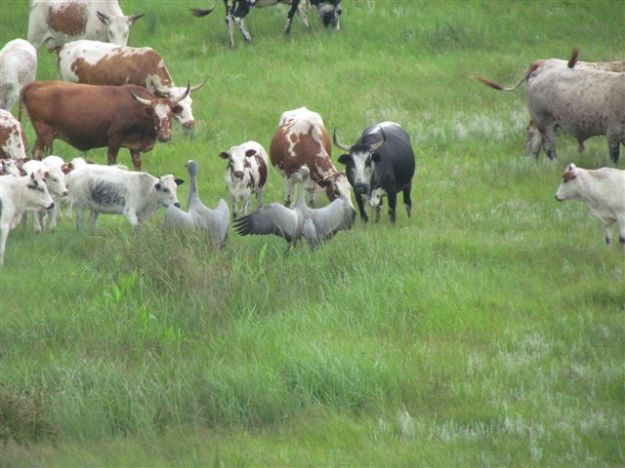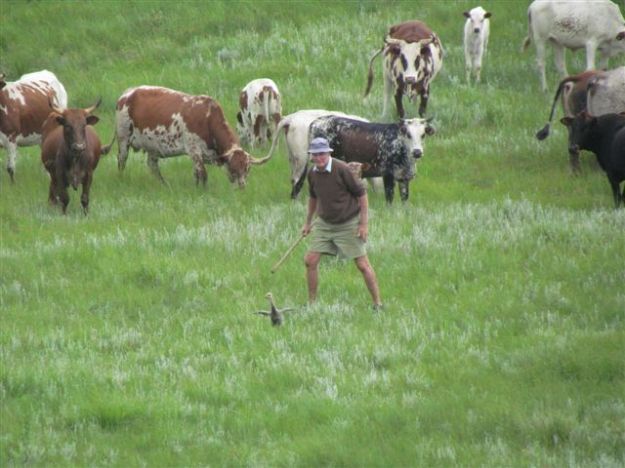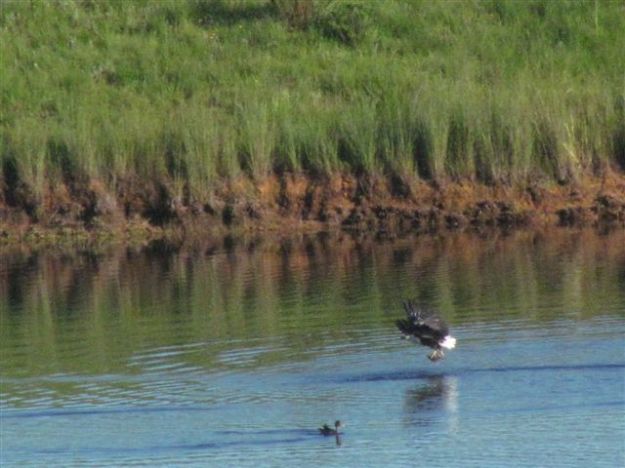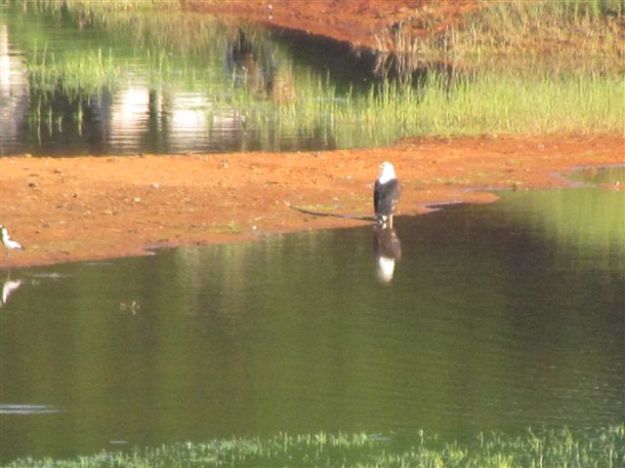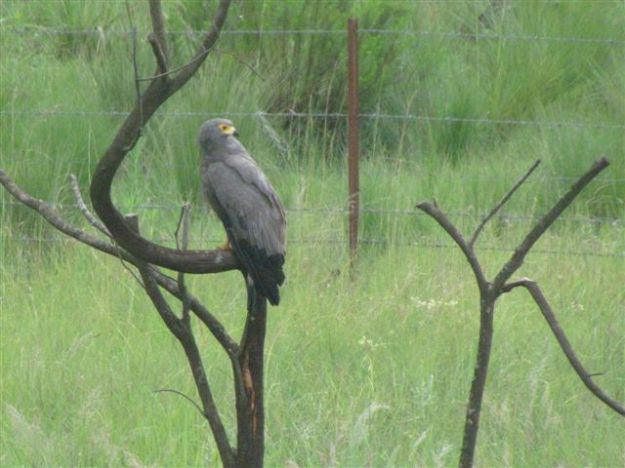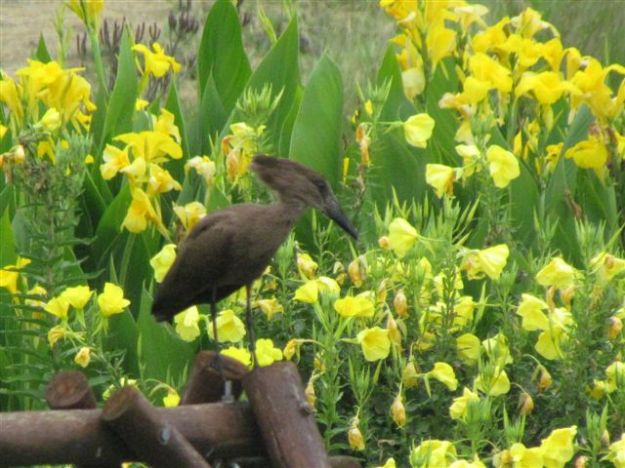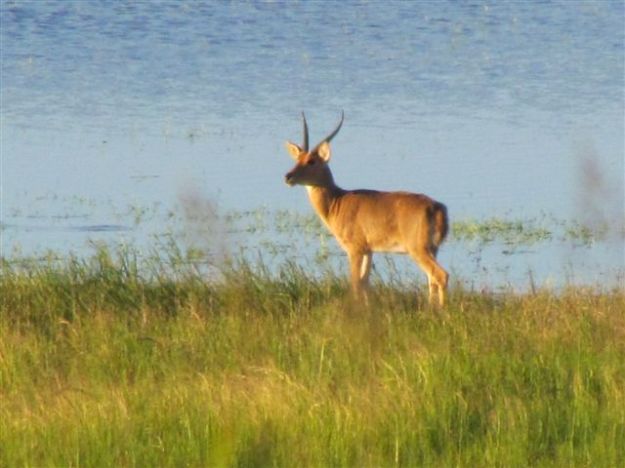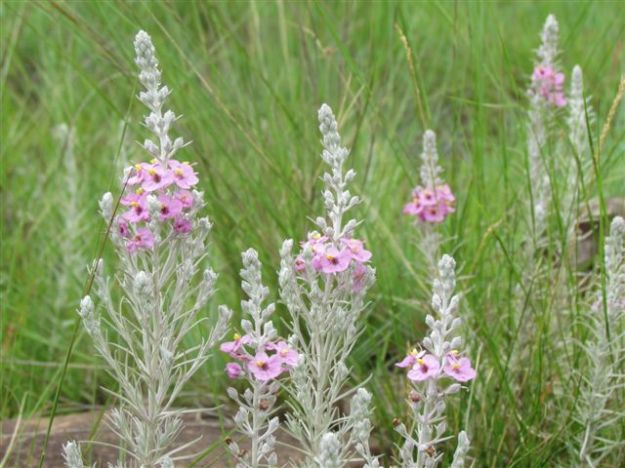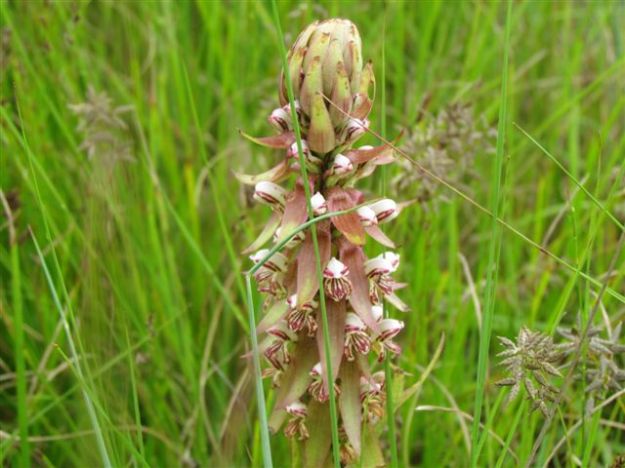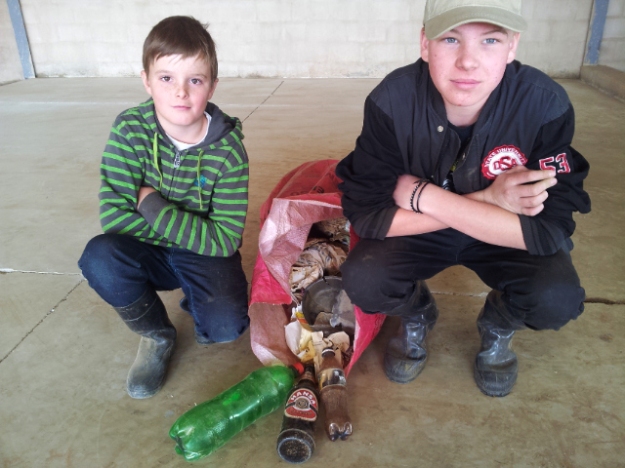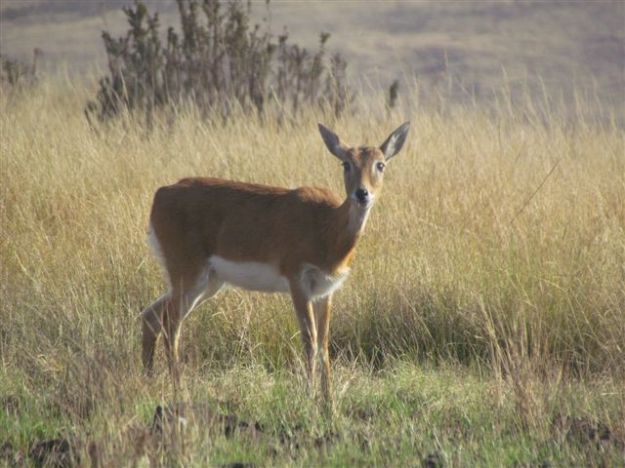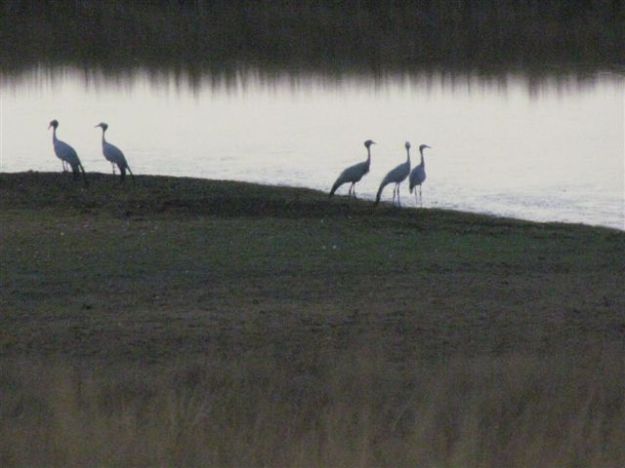Ashley Crookes – Copperleigh Farm
Autumn is officially here with winter trying to sneak in early and this frost we had a couple of weekends ago.

A very beautiful black caterpillar with red and yellow markings on the sides and blue spines on the top.

Some sort of brown mantis sitting on my arm. Comment from Dr Jason Londt: “It is a mantid (family Mantidae). Don’t know the species (we have over 180 species in SA). Unfortunately I am not aware of a local specialist who could give us a species name – most of the literature on the group seems to be in French! Anyway – nice twig mimic!”


Flying ants inside the house which appeared after the recent rains in Dargle

Junonia orithya madagascariensis or Eyed Pansy

I was moving a feed tyre out of the grass and suddenly noticed a whole family of little mice scurrying around. I managed to capture a pic of this guy before they all disappeared into the grass.

A beautiful Oribi ram, spotted on our farm. The first and only time that I have ever seen one.
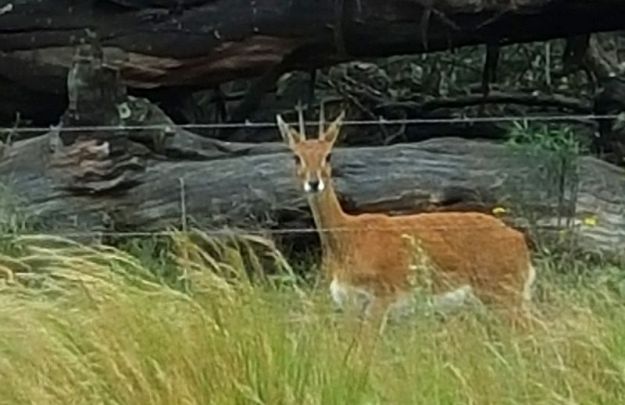
Not the best pic, but trying to capture a Pied Kingfisher with a cellphone camera in mid dive is a bit of a challenge!

Wild dagga or Leonotis leonurus

A whole field of them on Dolf Jansen’s property

I nearly stepped on this orange and black Rinkhals, and had just 3 seconds to capture this pic before he disappeared into the long grass.

A very cold, wet and miserable Black-headed Heron which I drove closer and closer to in the Landrover, before it got a little jumpy and flew away.

3 Wattled crane which came to visit our little dam

The Wattled crane is listed as vulnerable in the IUCN Red List.

A very large Puffadder which we saw crossing the tar road near Avanol.

Justin Fly – Kildaragh Farm
I have recently been hearing an African Scops owl calling in the evenings just as it gets dark. It’s an uncommon resident in this area . A couple of nights ago, the evening started with the Scops calling and later when we went to bed we heard Jackal yelping close by. They haven’t been heard for a few months . Waking in the early hours a Spotted Eagle Owl was hooting nearby. Just as sleep had come again we were woken by the raucous call of the Natal Francolin, and finally the Fish Eagle’ s lovely call at dawn, got me out of bed. Who would live anywhere else.
Mary-Anne Pridgeon – Copperleigh Farm
Found this Spotted Skaapsteker in the garden.

Comment by Pat McKrill: “Your diagnosis (Spotted Skaapsteker Psammophylax tritaeniatus) is quite correct, even though those occurring further north are more spotted – as the name implies – than striped. They’re a pretty common grassland snake up your neck of the woods, and because their food preference is pretty wide-ranging, some of it is not necessarily temperature dependent – rodents, skinks – they tend to ignore the hibernation rule and hunt year-round as long as the sun is shining. The concave indentation in the individual dorsal scales is a useful diagnostic. Thanks for the pics, great!”

David Crookes – Copperleigh Farm
A Grey Heron fishing in the very shallow Mavela dam

The Otter was out hunting for food too…

Here his head was right out the water

A beautiful Grey Crowned Crane paid us a visit

Preening time

Are you still checking me out?!

A family together on Mavela Dam

Pat & Sandra Merrick – Albury Farm, Lidgetton
We were blessed this month to see 7 wattled crane on the farm for a week – they would feed on our neighbours oats during the day and arrive at the dam early evening and sometimes midday to wade around the dam which is drying up daily. We could not see any tags on their legs.

One morning just one appeared and walked around the vlei area for a few hours and then sat down. We got very excited as thought perhaps she was thinking of making a nest there but when the cattle arrived to drink, she changed her mind. Like the plovers eggs which never hatch out as cattle always drinking around the edges of dam where they lay.
Our yellow bill ducklings are down from ten to five in number. We also have 6 Red-billed Teal who swim with them.

Two pairs of South African Shelduck now. They did not have chicks this year as dam only started to fill late December. Our 3 Blue Crane have been here the entire month. The fledgling still with his parents. 5 months old now. Sometimes another pair of blue crane join them but they never stay long. 3 african grey crowned crane have been arriving at sunset. We love watching their antics – they always dance in and out the water and sometimes the spoonbill and plovers join them in wild abandon. At first the fledgling would run off when he saw his parents making fools of themselves but lately he joins in the prancing. They are the only cranes that I have not seen swimming. The wattled cranes love to swim and stick their long necks down underwater to see what they can forage. One day we had all 3 cranes visit us.
We have noticed that the crowned cranes have been chasing the blue crane away from the dam – we are not sure why this is as they both have one fledgling. Shame, the 3 of them stand on the hill looking forlornly down at the dance show.


The gymnogene has been arriving early in the morning hunting amongst the rocks in front of the house – one morning there were 2 of them flying around.
When we woke early one cold overcast morning we found a Herald snake trying to swallow a large toad on our front verandah.


He just could not swallow it and regurgitated it. He then lay next to it. This did not go down well with me as everyone by now knows how terrified I am of snakes. Pat put snake and frog in a box and released them at the bottom of the farm.

Went down to the dam one hot day and saw thousands of dragonflies.

There were also a few red ones but I couldn’t get a pic of them as would not perch for long. There were also hundreds of brown ones but don’t know their name.
We saw a black shouldered kite eating a huge rat one morning on our dead tree – took him one and half hours to finish eating.

He kept stopping for a few minutes and would then continue to feed for awhile.

Found a new ant bear hole in kikuyu paddock near the dam. There was a Barn Owl on our verandah early one morning and on my approach he flew off. Not sure if this was a fledgling learning to fly. There are a couple in our chimney now which is very awkward if wanting to light a fire. A few years ago one was suffocated from the smoke and fell into the fire. It was horrible and I don’t want that happening again. A bokmakierie visited us for the first time. He sang to us for a good ten minutes. Beautiful start to the day.
There have been dozens of butterflies each day. Citrus swallowtail, Green-banded Swallowtail, Gaudy Commodore, Garden Commodore and for the first time a Blue Pansy.

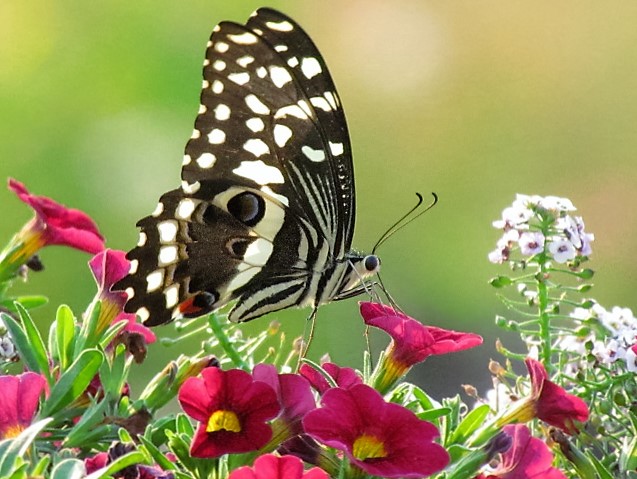
We have seen a couple of Reedbuck around the dam and in the hill behind us and a female sleeps in our garden each night in the long grass.
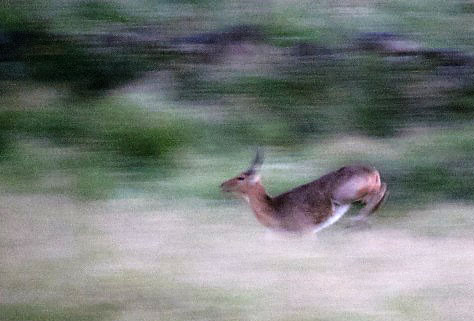
Also a couple of duiker eating the acorns from the oak trees. Pat has seen 7 Reedbuck and one duiker eating rye grass and veld on our neighbours farm across the stone wall. On our walks in the evening we have seen signs of a Common Fiscal in the area with the surprises left along the fenceline. A small snake

and a dung beetle on the barbed wire fence.

I received a lot of comments on the identification of my raptors last month – Dr David Allan said they were European Honey Buzzards – female adult with juvenile – very rare in this area. I have not seen them again. The Steppe Buzzards have left, not seeing any Jackal Buzzards, but still see the Long-crested Eagle. Often hear the African Fish-Eagles.
André Stapelberg – Crab Apple Cottages (sent in by Helen Booysen)
The photo of the Drakensberg Prinia was taken at Whispering Waters in its usual Leucosidea-habitat.

Terrestrial Brownbul

African Crowned Eagle
